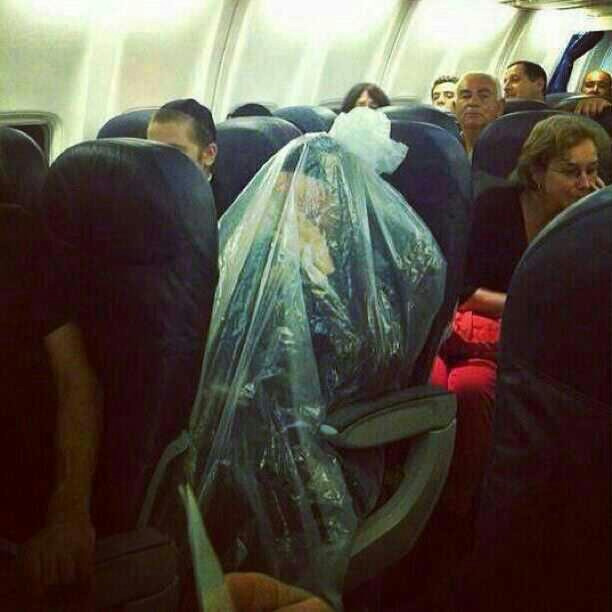Orthodox Jewish Man Wraps Himself In Plastic On Airplane, Possibly A 'Kohen' Trying To Maintain Ritual Purity [PHOTO]

At airports it’s common to see bags wrapped in plastic, but what about a passenger?
A photo of an Orthodox Jewish man wrapped in a plastic bag on an El Al flight has been circulating online, the Jewish Press reports.
The photo, published on Reddit, has garnered criticism and curiosity alike.
The man most likely belongs to the “Kohanim” -- a group of Jewish high priests that abide by a strict set of laws -- one of which prohibits coming into contact with the dead.
In this case, the flight had a trajectory that would fly over a Jewish cemetery, which would render him ritually impure. El Al changed the flight plan for the passenger, but from what the picture shows he didn't want to risk it.
El Al, Israel's national airline, has seen this happen before.
In 2002, an Orthodox Jewish man tried to wrap himself in plastic en route from Israel to Britain. The flight crew tried to prevent him from doing so, and eventually the plane was turned around to take the man off the flight, Haaretz reports.
So, why a plastic bag?
Rabbi Yosef Shalom Elyashiv, the late leader of the Lithuanian ultra-Orthodox community in Israel, issued an edict based on Jewish law that prohibited “Kohanim” from flying altogether if the plane crossed over a Jewish cemetery. He later amended the rule to allow “Kohanim” to fly as long as they are protected in thin plastic, Haaretz reports.
Who exactly are the “Kohanim”?
The “Kohanim” are a group of Jewish high priests that are believed to be direct descendants of Moses’ brother, Aaron. In ancient times, these priests served in the Temple of Jerusalem and are aristocrats of sorts that have special duties, privileges and restrictions.
“Kohanim” get special treatment because they are part of the Israeli tribe that refused to worship the Golden Calf in the Book of Exodus. God appointed them as his servants in recognition of their faith and obedience.
The priesthood is passed down from father to son. Now, thanks to DNA, research has proven that the “Kohanim” share a Y chromosome marker that confirms they come from the same ancestor.
© Copyright IBTimes 2025. All rights reserved.






















